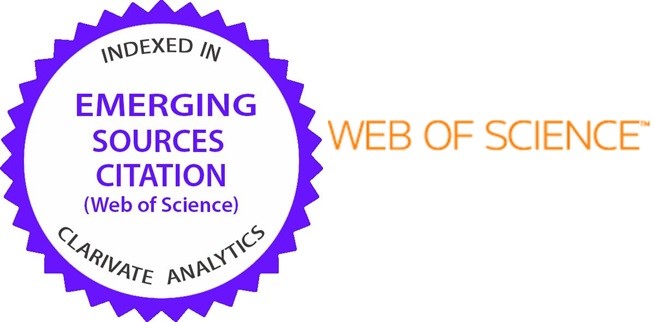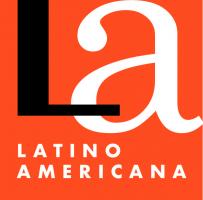La imagen en clave de interpretación de los rituales funerarios. Un estudio de iconografía del antiguo Egipto
Resumen
En el Egipto de época faraónica, el contexto funerario constituye una estructura material para asegurar la vida en el Más Allá no sólo al difunto, sino a toda la comunidad, ya que perpetúa sus valores y patrones de conducta a través de las prácticas rituales. La integración del difunto en una renovación cósmica justificaba la construcción de cada tumba y revelaba los fundamentos sociales de las prácticas funerarias. Esta ideología se reflejó en los monumentos mortuorios de la élite tebana de la dinastía 18 y nos interesa aplicar el método iconológico para decodificar las prácticas de ritos de pasaje que se plasmaron en las escenas que integran el programa decorativo de las tumbas de los nobles.
Palabras clave
Texto completo:
PDFReferencias
Abdel Qader, Muhammed. The Development of Funerary Reliefs and Practices Displayed in the Private Tombs of the New Kingdom at Thebes. General Organization for Government Printing Offices, 1966.
Assmann, Jan. “Semiosis and Interpretation in Ancient Egyptian Ritual”. Interpretation in Religion, Philosophy and Religion 2, ed. por Shlomo Biderman y Ben-Ami Scharfstein, Brill, 1992, pp. 87-109.
Assmann, Jan. “Der Literarische Aspekt des Ägyptischen Grabes und seine Funktion im Rahmen des “Monumentalen Diskurses”. Ancient Egyptian Literature. History and Forms, ed. por Antonio Loprieno, Brill, 1996, pp. 97-104.
Assmann, Jan. Egipto. Historia de un sentido. Traducción de Joaquín Chamorro Mielke, Abada, 2005.
Assmann, Jan. Religión y memoria cultural. Diez estudios. Traducción por Marcelo Burello y Karen Saban, Ediciones LILMOD y Libros de la Araucaria, 2008.
Baines, John. “Contextualizing Egyptian Representations of Society and Ethnicity”. The Study of the Ancient Near East in the 21st Century: The Willliam Foxwell Albright Centennial Conference, ed. por Jerrold S. Cooper y Glenn M. Schwartz, Eisenbrauns, 1996, pp. 339-384.
Belting, Hans. Imagen y culto. Una historia de la imagen anterior a la era del arte. Traducido por Cristina Díez Pampliega y Jesús Espino Nuño, Akal, 2009.
Castel Ronda, Elisa. Egipto. Signos y símbolos de lo sagrado. Alderabán, 1999.
Cruz Uribe, Eugene. “A Model for the Political Structure of the Ancient Egypt”. For His Ka: Essays Offered in Memory of Klaus Baer, ed. por David P. Silverman, The Oriental Institute of the University of Chicago, 1994, pp. 49-53.
David, Arlette. Renewing Royal Imagery. Akhenaten and Family in the Amarna Tombs. Brill, 2021.
Davies, Norman de Garis. The Rock Tombs of El Amarna. Egypt Exploration Fund, 1903 – 1908.
Der Manuelian, P. Slab Stelae of the Giza Necropolis. New Haven y Filadelfia: Peabody Museum of Natural History of Yale University, 2003.
Didi-Huberman, Georges. La imagen superviviente. Historia del arte y tiempo de los fantasmas según Aby Warburg. Abada, 2009.
Didi-Huberman, Georges. Ante el tiempo. Historia del arte y anacronismo de las imágenes. Traducción de Antonio Oviedo, Adriana Hidalgo, 2018.
Endesfelder, Erika. Die Arbeiter der thebanischen Nekropole im Neuen Reich. Golden House Publications, 2018.
Engelbach, Reginald. A Supplement to the Topographical Catalogue of the Private Tombs of Thebes (Nos. 253 to 334) with some notes on the Necropolis from 1913 to 1924. The French Institute of Oriental Archeology, 1924.
Faulkner, Raymond. A Concise Dictionary of Middle Egyptian. Griffith Institute, 1976.
Finnestad, Ragnhild. “The Meaning and Purpose of Opening the Mouth in Mortuary Contexts”. Numen, Vol. 25, n° 2, 1978, pp. 118-134.
Gardiner, Alan. The Tomb of Amenemhet (82). The Egypt Exploration Fund, 1915.
Ginzburg, Carlo. “De A. Warburg a E. H. Gombrich. Notas sobre un problema de método.” Mitos, emblemas e indicios. Morfología e historia. Gedisa, 1994, pp. 38-93.
Gombrich, Ernst Hans. “Objetivos y límites de la iconología”, en: Gombrich esencial (ed. Richard Woodfield). Debate, 1997, pp. 457 a 484.
Hartwig, Melinda. “Style and Visual Rhetoric in Theban Tomb Painting”. Egyptology At the Dawn of the Twenty-first Century. Proceedings of the Eighth International Congress of Egyptologists Cairo, ed. por Zahi Hawass, The American University in Cairo Press, 2003, pp. 298-307.
Hartwig, Melinda. Tomb Painting and Identity in Ancient Thebes, 1419-1372 BCE. Turnhout, 2004.
Hornung, Erik et. al., editores. Ancient Egyptian Chronology. Brill, 2006.
Ikram, Salima. Death and Burial in Ancient Egypt. The American University in Cairo Press, 2015.
Laboury, Dimitri. “Tradition and Creativity Toward a Study of Interconicity in Ancient Egyptian Art”. (Re)productive Traditions in Ancient Egypt, ed. por T. Guillen, Presses Universitaires de Liège, 2015, pp. 229-258.
Kampp, Friederike. Die Thebanische Nekropole. Zum Wandel des Grabgedankens von der XVIII. bis zur XX. Dynastie. Theben XIII, 2 vol. Phillip von Zabern, 1996.
Kemp, Barry. El antiguo Egipto. Anatomía de una civilización. Crítica, 1992.
Kemp, Barry. The City of Akhenaten and Nefertiti. Amarna and its people. Thames & Hudson, 2012.
Manniche, Lise. Lost Tombs, A Study of Certain Eighteenth Dynasty Monuments in the Theban Necropolis. British Museum, 1987.
McQuinn, Zoe. Immortal Visages in the Diniacopoulos Collection: A Statue Group from Theban Tomb 318. Royal Ontario Museum, 2012.
Ockinga, Boyo. “Use, reuse, and abuse of ‘sacred space’: observations from Dra. Abu al-Naga”. Sacred Space and Sacred Function in Ancient Thebes, ed. por Peter Dorman y Betsy M. Bryan, The Oriental Institute of the University of Chicago, 1984, pp. 139-162.
Ockinga, Boyo. A Tomb from the Reign of Tutankhamun at Akhmin. Aris & Phillips, 1997.
O’Connor, David. “City and Palace in New Kingdom Egypt”. Cahier de recherches de l’Institut de Papyrologie et d’Égyptologie de Lille, Vol. 11, 1989, pp. 73-87.
O´Neill, Barbara. Setting the Scene: The Deceased and Regenerative Cult within Offering Table Imagery of the Egyptian Old to Middle Kingdoms (c.2686 – c.1650 BC). Archaeopress, 2015.
Panofsky, Erwin. Estudios sobre iconología. Traducción de Bernardo Fernández, Alianza Editorial, 1978.
Porter, B. & R. Moss. 1927 and 1970. Topographical Bibliography of Ancient Egyptian Hieroglyphic Texts, Reliefs and Paintings 1. Theban Necropolis. Part 1. Private Tombs. Oxford University Press, Oxford.
Robins, Gay. “Meals for the Dead: the image of the deceased seated before a table of offerings”. Dining and Death: Interdisciplinary Perspectives on the ‘Funerary Banquet’ in Ancient Art, Burial and Belief, ed. por Catherine Mary Draycott et al., Peeters Press, 2016, pp. 112-127.
Roth, Ann Macy. “Fingers, Stars, and the ‘Opening of the Mouth’: The Nature and Function of the nTrwj-Blades”. The Journal of Egyptian Archaeology, Vol. 79, 1993, pp. 57-79.
Skorupski, John. Símbolo y teoría. Premia Editora, 1985.
Shaw, Ian. “Balustrades, Stairs and Altars in the Cult of the Aten at el-Amarna”. The Journal of Egyptian Archaeology, Vol. 80, 1994, pp. 109-127.
Tefnin, Roland. “Discours et iconicité dans l’art égyptien”. GM, Vol. 79, 1984, pp. 55-69.
Tiradritti, Francesco. “Renacimiento. Arcaísmo. El sentido de la historia”. Pharaonic Renaissance. Archaism and the sense of History in Ancient Egypt. Museum of Fine Arts, 2008, pp. 17-19.
Trigger, Bruce et al. Historia del Egipto antiguo. Crítica, 1997.
Vandier, Jacques. Manuel d’archéologie égyptienne. IV. Bas-reliefs et peintures. Scènes de la vie quotidienne. A. et J. Picard, 1964.
Zingarelli, Andrea et al. Argentine Mission Preliminary Report. Amenmose Project. Theban Tomb 318. Sheikh Abd el-Qurna, Luxor, Egypt. Ministry of Tourism and Antiquities, 1st. season 2020 y 2nd. season 2022.
Enlaces refback
- No hay ningún enlace refback.

Este obra está bajo una licencia de Creative Commons Reconocimiento-NoComercial-CompartirIgual 4.0 Internacional.
 | Estudios de Teoría Literaria. Revista digital: artes letras y humanidades es una revista fundada por el Grupo de Investigaciones Estudios de Teoría Literaria y radicada en el Centro de Letras Hispanoamericanas (CELEHIS) de la Facultad de Humanidades de la Universidad Nacional de Mar del Plata. Correo electrónico: estudiosdeteorialiteraria@gmail.com | Web: http://fh.mdp.edu.ar/revistas/index.php/etl | LinkedIn: https://www.linkedin.com/in/estudios-de-teoria-literaria/ | Instagram: https://www.instagram.com/revistaestudiosdeteoria/ | Facebook: estudiosdeteorialiteraria | ISSN 2313-9676 (Versión en línea)
|
La Dirección no se responsabiliza por las opiniones vertidas en los artículos firmados. | |
DIRECTORIOS Y CATÁLOGOS QUE INCORPORAN LA REVISTA | |||
SISTEMAS DE INDIZACIÓN | |||
BASES DE DATOS | |||
OTROS INDICADORES | |||

 se encuentra bajo
se encuentra bajo 





















